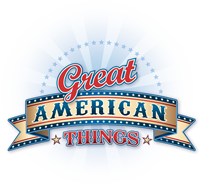Singer: Buddy Holly

He didn't want to be on the Midwest tour, and his bus was cold and broken down. So he chartered a flight to his next show. It was the day the music died. Uploaded by moockmusic.com.
He died at the way-too-young age of 23. He’d only been recognized on the music scene for a year and a half. And yet he managed to create memorable music and an innovative sound that are instantly recognizable half a century later.
Holly had made a name for himself in his hometown of Lubbock, Texas, where he opened shows for both Elvis Presley (Great American Things, July 29, 2009) and Bill Haley and the Comets. He put together a band he called the Crickets, signed a contract with Decca Records, and went to Nashville to record his first songs.
They bombed. Decca dumped him. But he found another manager, signed another contract, and released “That’ll Be the Day.” Decca said, “Come on back,” so he did.
Of course, you know the sad ending to this story. Holly went on a tour of the Midwest along with Dion and the Belmonts, Richie Valens, and the J.P. “Big Bopper” Richardson. The tour was plagued with transportation problems, so Holly chartered a plane to take some of the performers from Iowa to Minnesota. It crashed, killing Holly, Valens, Richardson, and the pilot.
It was “the day the music died.”
We’re left with a number of great recordings Holly made in a short time. His unique singing style influenced future artists as diverse as Bob Dylan and the Beatles. Among his hits were “That’ll Be the Day,” “Peggy Sue,” “Oh Boy!,” “Maybe Baby,” “Rave On,” “It’s So Easy,” “It Doesn’t Matter Anymore,” “Not Fade Away,” “Raining in My Heart,” and “True Love Ways.”
Buddy Holly was in the first group inducted into the Rock and Roll Hall of Fame (Great American Things, August 31, 2009), and was ranked number 13 by Rolling Stone in its list of Fifty Greatest Artists of All Time.
[youtube=http://www.youtube.com/watch?v=WQiIMuOKIzY]
[youtube=http://www.youtube.com/watch?v=mt02zuoxGj4]

